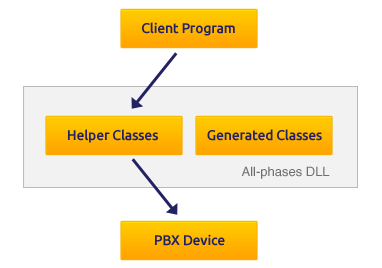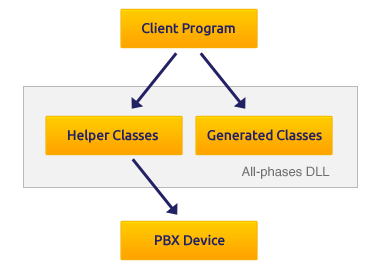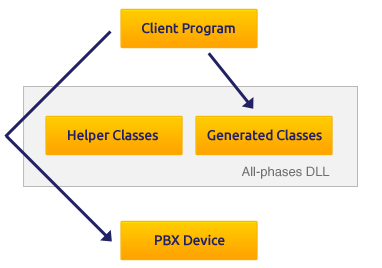 CSTA API's CSTA API's
CSTA (Computer Supported Telecommunications Applications) Protocol CSTADLL specifically includes support for the following PBX devices:
- Alcatel 4400
- Alcatel OXO
- Panasonic KX-TDA
- Panasonic KX-TDE
- Panasonic NCP
- Siemens CAP
- Siemens Hicom 300
- Siemens Hipath 3000
- Siemens Hipath 4000
- Siemens Realitis
- Tadiran Coral
- Unify Openscape Business X5
The generic (i.e., non-device-specific) helper classes included in the DLL should be sufficient to allow developers to work with many standard PBX devices that aren't given in the list above.
The helper classes provide methods for several common ACSE and CSTA operations. Examples include establishing an ACSE session with a PBX, instructing a PBX to make a call, transfer a call, query a device, etc.
The helper classes also provide the ability for a client program to specify an asynchronous callback function that will be invoked whenever asynchronous messages are received from the PBX. A common use for this feature would likely be CSTA monitoring functions, in which messages with monitor data are sent asynchronously to the client from the PBX.
The CSTADLL software can be used in multiple ways, depending on the needs of the client program. The diagram below illustrates one way of using the CSTADLL software. In this scenario a client program is using just the helper classes to do ACSE and CSTA operations and communicate with the PBX. This way of using the software would allow the client program to perform some common ACSE and CSTA operations and find out if they were successful. It would not allow the client program to see any content that the PBX returns in the form of an ACSE or CSTA message. It would also not allow the client program to send any messages to the PBX for which the CSTADLL software doesn't expose a helper method. The DLL that's included with the CSTADLL software is identified as the all-phases DLL in this diagram.

This next diagram shows the client program using both the helper classes and the generated classes. This approach allows the client program to view content that the PBX sends back, and it also allows the client program to send messages for which no helper method is exposed by the all-phases DLL.

This last diagram shows the client program using only the generated classes that are within the all-phases DLL. This approach might be useful if the client program needs to manage its own communication with a PBX device. The PBX device, for example, might not support TCP/IP communication or might work better if a different communication paradigm is used.

|
 공지사항
공지사항  서비스소개
서비스소개  회사소개
회사소개 





















